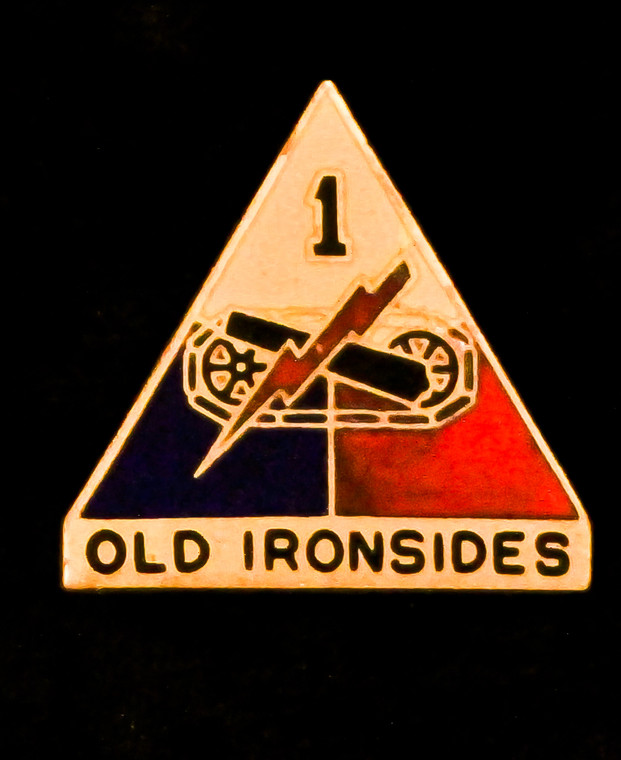The clash of identities is a fascinating subject, especially when it involves two seemingly distinct realms: the maritime heritage associated with Old Iron Sides and the digital persona encapsulated by IdGod. While one represents a storied past, steeped in naval tradition and historical significance, the other embodies the complexities of modern online identity. The debate between Old Iron Sides or IdGod invites us to explore how history shapes our present selves and influences who we choose to become.
As we delve into this intriguing topic, you’ll discover not only the rich background of each identity but also their cultural implications and lasting legacies. From wooden ships sailing through turbulent seas to avatars navigating cyberspace, both names tell compelling stories that resonate deeply within us all. Ready for an exploration that spans centuries and dives into our collective consciousness? Let’s embark on this journey together!
The History of Old Iron Sides
Old Iron Sides, officially known as the USS Constitution, launched in 1797. This legendary warship is one of the oldest commissioned naval vessels still afloat today.
Constructed in Boston, she was built during a time when America was asserting its identity on the global stage. The ship’s design featured thick oak planking that made her formidable against enemy fire.
Her most famous battle came during the War of 1812 against HMS Guerriere. After a fierce engagement, sailors claimed that cannonballs bounced off her hull, leading to the nickname “Old Ironsides.”
The vessel became a symbol of American resilience and pride. Over time, Old Iron Sides has served various roles including training young sailors and participating in numerous commemorative events.
Today, she rests at Charlestown Navy Yard in Massachusetts. Visitors can explore her storied decks and appreciate nearly two centuries of maritime history encapsulated within her wooden frame.
The Popularity of IdGod
IdGod has surged in popularity, particularly among those navigating the complexities of online identity. This platform offers users a unique way to control their digital personas, empowering them to craft and manage identities that resonate with their personal beliefs.
The appeal lies in its ability to provide anonymity while fostering connections. Users find community and support within this virtual space, where shared experiences can lead to meaningful discussions about privacy.
As technology advances, IdGod continues evolving. Its user-friendly interface attracts younger generations who seek creative freedom online. The blend of modernity with identity exploration captivates many individuals eager for self-expression.
With social media shaping our lives more than ever, platforms like IdGod serve as safe havens for exploring facets of identity often overlooked or dismissed elsewhere. It is this mix of relevance and innovation that solidifies its position in contemporary culture.
Cultural and Social Significance of Both Names/Identities
The names Old Iron Sides and IdGod carry deep cultural resonance. Each represents a unique facet of identity that speaks to different communities.
Old Iron Sides is steeped in maritime history, evoking images of resilience and strength. This name celebrates the legendary USS Constitution, symbolizing national pride and historical legacy. It fosters a sense of belonging among those who cherish nautical traditions.
In contrast, IdGod emerges from the digital age. It embodies anonymity and self-expression within online spaces. As users navigate their virtual identities, this name resonates with those seeking freedom from conventional roles.
These identities reflect broader social themes: one rooted in heritage and valor, while the other explores modernity’s complexities. Both names invite dialogue about how we perceive ourselves across various contexts—historical or digital—and challenge us to embrace multifaceted identities in an ever-evolving world.
How Do People Choose Which Identity to Embrace?
Choosing an identity often feels like wandering through a maze. For many, it starts with personal experiences and cultural influences shaping their perspectives. Some individuals are drawn to historical figures or symbols they resonate with deeply.
Peer influence plays a significant role too. Friends and social circles can sway decisions about which identity feels more authentic. This connection often fosters discussions that illuminate different aspects of each identity.
In the age of technology, online interactions also impact choices significantly. Social media platforms allow people to explore various personas without geographical boundaries.
Exploring these identities involves trial and error; individuals may try on different labels until one fits just right. The journey is unique for everyone, reflecting their values, beliefs, and aspirations in ways that feel most genuine to them.
The Effects of Identity on Personal and Collective Identities
Identity shapes us in profound ways. On a personal level, it influences how we see ourselves and interact with the world. Our names, backgrounds, and experiences create a tapestry of individuality that defines our choices and beliefs.
Collectively, identity fosters community. Shared narratives bring people together. Whether through history or digital platforms like IdGod, these connections form bonds that transcend mere acquaintanceship.
The interplay between individual and collective identities is dynamic. As one evolves, so does the other. Personal growth can inspire communal change while cultural shifts might redefine who we are as individuals.
Understanding this relationship is vital in today’s society. It allows for empathy and connection across diverse groups—an essential aspect of navigating modern life effectively.
The Legacy of Old Iron Sides
Old Iron Sides, the USS Constitution, stands as a testament to naval resilience. Launched in 1797, this warship played a crucial role during the War of 1812, earning fame for its battles against British ships.
Her wooden hull and powerful cannons made her formidable. Sailors admired her speed and agility on the water. Stories of daring confrontations brought pride to American hearts.
Beyond military might, Old Iron Sides symbolizes national identity. She embodies the spirit of perseverance and innovation that defined early America. The ship has weathered storms—both literal and metaphorical—and remains afloat today.
Visitors flock to Boston’s Charlestown Navy Yard to witness history firsthand. Educational programs shed light on maritime heritage while igniting passion for naval history among new generations.
The legacy extends into popular culture too, featuring in books and films that celebrate adventure at sea. Old Iron Sides continues inspiring those who seek courage in their own journeys through life.
IdGod: Understanding the Digital Identity Landscape
In the rapidly evolving digital world, IdGod embodies a unique phenomenon. This online identity is not just a name; it’s an emblem of anonymity and self-expression.
Many individuals flock to platforms like this for various reasons. The desire for privacy in an increasingly surveilled society drives people to seek out pseudonyms that allow them to engage without fear of judgment.
IdGod also reflects broader cultural trends. As our lives intertwine with technology more than ever, we find ourselves navigating complex layers of online personas and real-world identities.
This digital landscape challenges traditional notions of who we are. It invites creativity and reinvention but can also lead to confusion about authenticity.
The allure lies in its promise: freedom from societal constraints while exploring diverse aspects of oneself. Each user crafts their narrative, contributing to a rich tapestry of experiences that define modern existence within cyberspace.
Historical Significance of Old Iron Sides
Old Iron Sides, formally known as the USS Constitution, holds a revered place in American history. Launched in 1797, this ship is one of the oldest commissioned warships afloat. Its wooden hull with copper sheathing made it impervious to enemy cannonballs during the War of 1812.
The ship played a pivotal role in establishing U.
S. naval power. Capturing numerous prizes and defending American interests at sea solidified its legacy as a symbol of resilience and strength.
Beyond battles, Old Iron Sides represents national identity. It embodies America’s early maritime heritage and ingenuity. Its storied past continues to inspire generations about bravery and sacrifice.
Today, visitors flock to see this magnificent vessel docked in Boston Harbor. The stories etched into her timbers remind us of our nation’s journey through trials at sea while fostering pride among those who cherish maritime history.
The Evolution of Identity in the Digital Age
The digital age has radically transformed how we perceive identity. Once defined by tangible connections—family, community, and geography—identity now often emerges from a virtual landscape.
Social media platforms allow individuals to curate their personas meticulously. Users can select what facets of themselves to showcase while hiding others. This selective presentation creates a multifaceted identity that may differ dramatically across various online spaces.
Moreover, anonymity plays a crucial role in shaping these identities. Some people embrace pseudonyms or avatars, expressing aspects of themselves they might not reveal in real life.
As technology evolves, so does our understanding of selfhood. The lines between personal and public blur as interactions become increasingly digitized. Each tweet or post adds layers to the tapestry of who we are—or at least who we want others to believe we are.
This evolution challenges traditional concepts of authenticity and encourages ongoing exploration into what it means to be human today.
Comparing Maritime Heritage and Online Personas
Maritime heritage embodies the rich history of seafaring, showcasing resilience and adventure. Ships like Old Iron Sides symbolize national pride and endurance. Their tales are woven into the fabric of culture, inspiring generations.
Conversely, online personas thrive in a digital realm where identity is fluid. Platforms allow individuals to curate their images, often reflecting aspirations rather than reality. This shift emphasizes self-expression but can lead to disconnection from one’s true self.
Both maritime legends and online identities highlight our desire for belonging and recognition. While ships represent collective memory, online personas serve personal narratives shaped by interaction and engagement.
In essence, both realms illustrate how we navigate identity across different landscapes—one through tangible legacy and the other through virtual expression. Each has its own significance in shaping who we are today amidst evolving cultural dynamics.
Cultural Impact: From Ships to Screens
The transition from the era of Old Iron Sides to the digital age marked a fascinating evolution in cultural identity. Ships once served as symbols of strength and exploration, uniting communities through shared maritime heritage.
Today, we navigate virtual waters where IdGod represents our online personas. The significance of identity has shifted dramatically with technology shaping how we connect and communicate.
This shift reflects broader societal changes. Where a ship’s legacy forged national pride, modern avatars create personal brands that echo individuality.
Memories of Old Iron Sides evoke nostalgia for adventure on the high seas, while screens symbolize connectivity in an ever-expanding global culture.
Both identities—maritime and digital—highlight humanity’s desire to explore beyond boundaries. They prompt us to reflect on how history informs our present choices in self-expression and belonging within diverse communities.
Navigating Identity: Lessons from Old Iron Sides and IdGod
Navigating identity today requires an understanding of both historical and modern contexts. Old Iron Sides, the famed USS Constitution, represents a tangible heritage. It embodies resilience and patriotism from a time when maritime exploration defined national boundaries.
IdGod, on the other hand, illustrates our shift into digital realms. Online personas can be malleable yet profound—reflecting aspirations or alternative realities that engage users in new ways.
Both identities serve as mirrors for self-exploration. They showcase how history informs current narratives shaped by technology.
Individuals often oscillate between these two worlds: one grounded in reality and the other fluid in nature. The journey is rarely linear; it’s filled with moments of discovery about who we are versus who we wish to become.
This interplay challenges us to redefine connections within ourselves and with society at large. Each choice we make adds layers to our ever-evolving identity landscape.
The Role of Technology in Shaping Identity
Technology plays a crucial role in shaping our identities today. With the rise of social media, individuals can curate their personas like never before. Each post is a brushstroke on the canvas of self-representation.
Digital platforms provide spaces for exploration and expression. People connect with diverse communities, often discovering facets of themselves that were previously hidden. This connectivity fosters a sense of belonging.
However, technology also introduces challenges. The pressure to maintain an idealized online presence can distort reality. Users may feel compelled to conform to societal expectations rather than embracing authenticity.
Moreover, anonymity online creates unique opportunities for experimentation with identity. Many navigate various roles without fear of judgment or repercussions, leading to richer personal narratives.
As we engage with these technologies daily, it’s essential to consider both the enriching and complicating aspects they bring into our lives and identities.
Preservation of History: Lessons from the Past
Preserving history is more than safeguarding artifacts. It’s about understanding the stories they tell.
Old Iron Sides, for instance, represents resilience and maritime pride. Each scar on its hull whispers tales of naval battles and human courage. This ship isn’t just wood and metal; it’s a symbol of a nation’s journey.
In contrast, IdGod reveals the complexities of digital identity in today’s world. Online personas can shape lives yet often mask true selves. The lessons from Old Iron Sides remind us to cherish authenticity amidst turbulent seas of virtual existence.
As we navigate through time, we must recognize that every identity—be it historical or digital—carries weighty significance. Preserving these identities ensures future generations grasp their roots while forging new paths forward.
Understanding our past enables informed choices in crafting our present and future identities—a vital lesson as personal narratives continue to evolve.
Future Perspectives: Identity in a Changing World
The landscape of identity is rapidly shifting. As technology advances, so does our understanding of self. Digital personas are becoming as significant as physical identities.
Virtual realities and social media platforms allow for endless possibilities in how we present ourselves. Each click shapes perceptions, blurring the lines between authenticity and facade.
Globalization plays a crucial role too. Cultures intertwine, creating hybrid identities that reflect diverse influences. This fusion enriches personal narratives but also complicates them.
Young generations navigate these complexities daily. They balance tradition with innovation, often redefining what it means to belong.
Amidst this evolution lies an opportunity for deep connection and empathy. Embracing multiple layers of identity fosters inclusivity in our communities.
As we move forward, curiosity will be essential. Understanding different perspectives can help bridge gaps created by misunderstandings or stereotypes.
The Maritime Legacy: Old Iron Sides in Popular Culture
Old Iron Sides, the USS Constitution, has sailed through the waves of popular culture like no other vessel. This iconic warship symbolizes strength and resilience. Its legacy is captured in books, films, and even video games.
From historical novels that recount its battles to documentaries showcasing its restoration, Old Iron Sides remains a beacon of American maritime history. Film adaptations often romanticize its daring exploits on the high seas.
Artistry thrives as well; paintings and sculptures pay homage to this majestic ship. The public’s fascination with Old Iron Sides speaks volumes about our connection to maritime heritage.
Even today, it inspires contemporary musicians who weave tales of adventure into their songs. Each cultural reference serves as a reminder of what this ship represents: bravery, endurance, and an unyielding spirit against all odds.
Conclusion: Embracing Both Identities in Modern Society
Navigating the complexities of identity today means acknowledging both history and modernity. Old Iron Sides represents a rich maritime tradition, evoking images of strength and resilience.
At the same time, IdGod symbolizes the rapidly evolving digital landscape that shapes how we present ourselves online. Each identity carries its own significance, reflecting our past while engaging with contemporary realities.
Embracing these dual identities fosters a deeper understanding of who we are in various contexts. It encourages us to appreciate heritage while adapting to change.
In a world where boundaries blur between physical and virtual existence, recognizing these diverse aspects can be empowering. The interplay between Old Iron Sides and IdGod offers invaluable insights into personal expression and cultural relevance today.
By valuing both identities, individuals can create richer narratives that honor their roots while navigating future challenges confidently.
FAQs
Embracing the rich histories and identities of Old Iron Sides and IdGod allows us to reflect on our own journeys. Both resonate deeply within their respective domains, yet they share common threads of identity formation and cultural significance.
Navigating the waters of identity can be complex. Each name carries its weight in history, influencing how individuals see themselves and how society perceives them. As we continue to evolve, understanding these identities enhances our appreciation for both maritime heritage and digital personas.
How do these names shape us? They remind us that identity is more than a label; it is an intricate tapestry woven from experiences, culture, technology, and shared narratives.
Curious minds often have questions about this fascinating subject:
What does “Old Iron Sides” refer to?
“Old Iron Sides” is a nickname for the USS Constitution, one of the oldest commissioned warships afloat in the world today. Launched in 1797, she played a significant role during various conflicts.
Why is IdGod popular among internet users?
IdGod provides anonymity for users seeking privacy online while accessing restricted content or services without revealing personal information.
How do historical events influence modern identities like Old Iron Sides or IdGod?
Historical events create foundational stories that shape collective memory. These memories inform contemporary identities as people draw connections between past experiences and current realities.
Can embracing multiple identities be beneficial?
Absolutely! Embracing diverse aspects of one’s identity allows individuals to connect with different communities while fostering empathy towards various cultures.
Are there any risks associated with adopting an online persona like IdGod?
Yes. While anonymity offers protection against surveillance or harassment, it can also lead to misuse or negative behavior due to a perceived lack of accountability.
These questions spark further dialogue about who we are as individuals navigating through time—whether at sea aboard vessels like Old Iron Sides or traversing digital realms under aliases such as IdGod.
FOR FURTHER INFORMATION VISIT: BUIENRADAR.CO.UK











